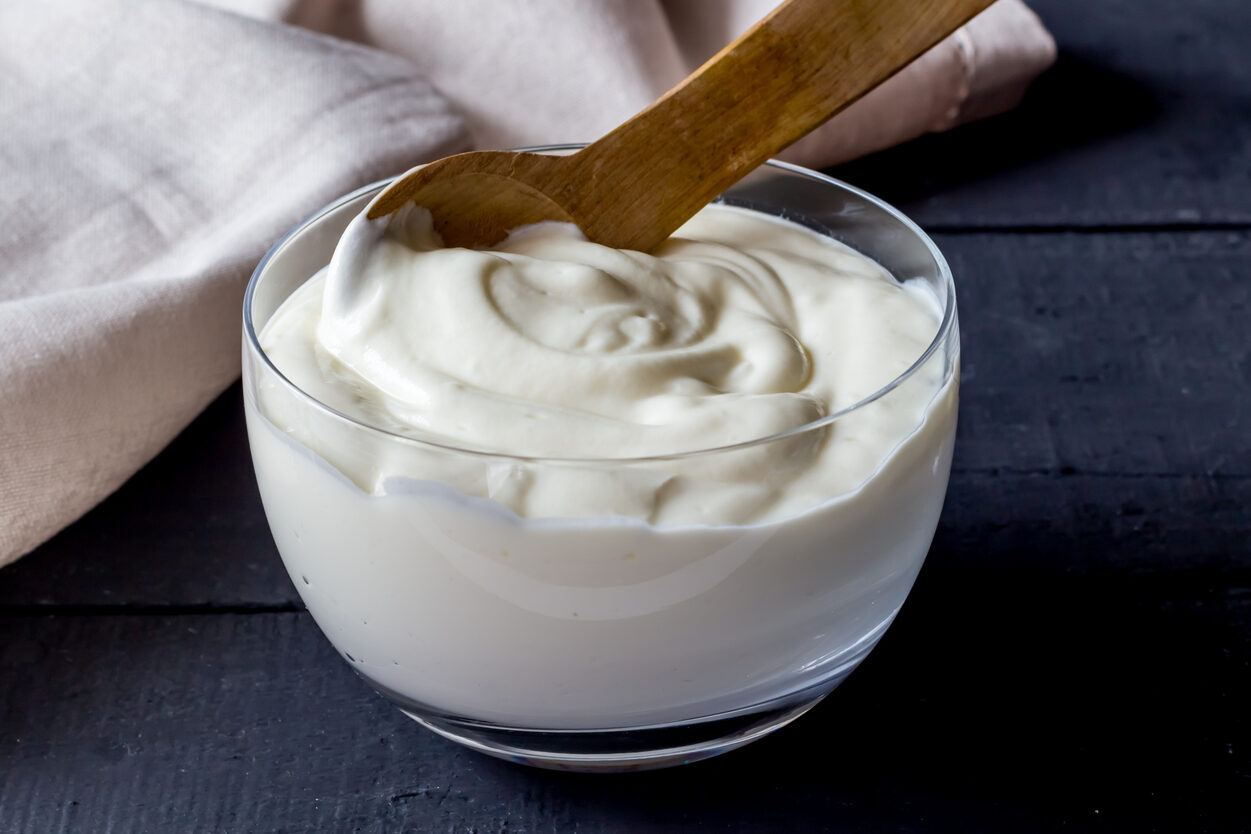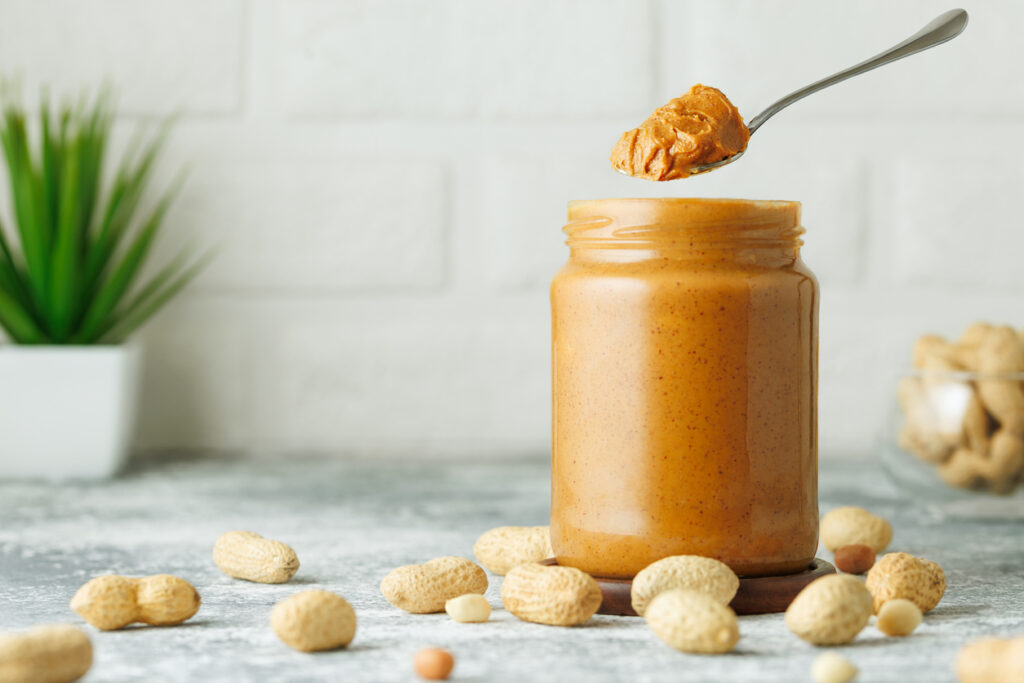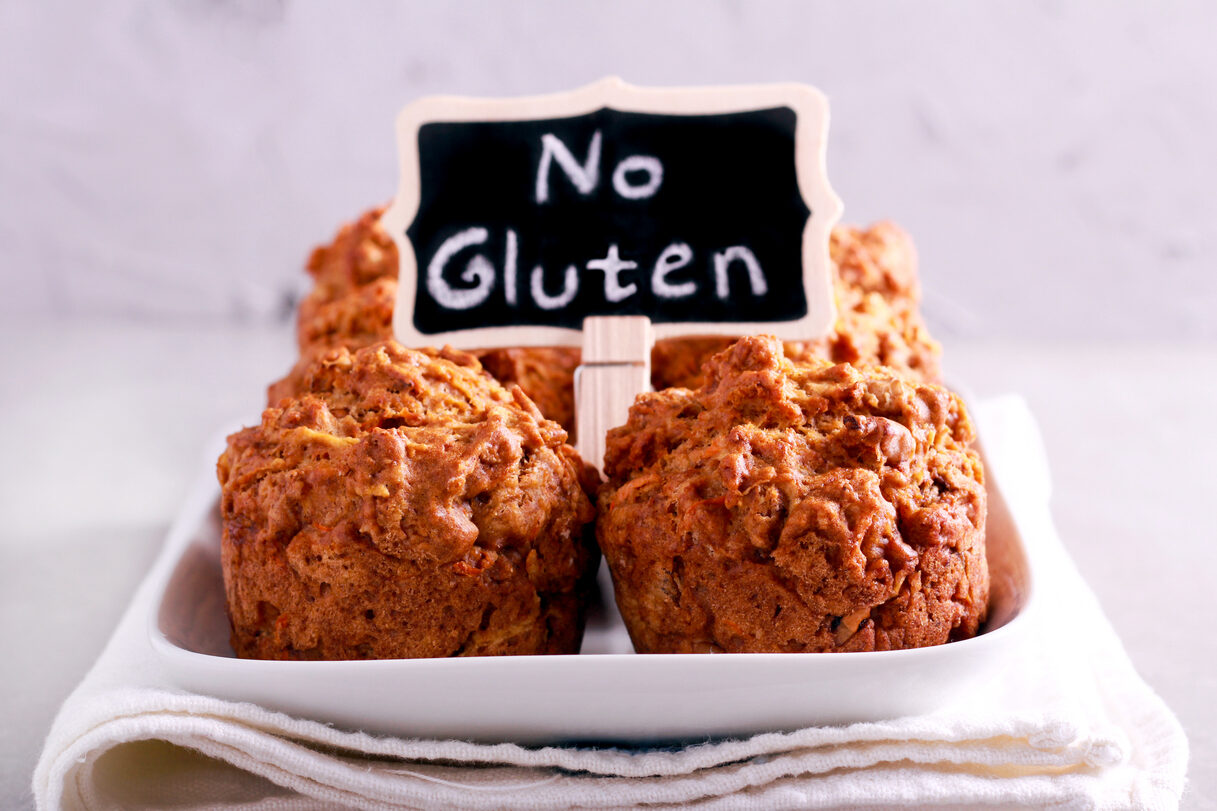1. Low-Fat Yogurt

That creamy cup of low-fat yogurt may look like a health-conscious choice, but it often swaps fat for loads of added sugar. When food manufacturers reduce fat, they usually add sweeteners to maintain flavor and texture. That’s why a fruity, low-fat yogurt can contain up to 20 grams of sugar, close to what you’d find in a candy bar. And it’s not just the obvious “fruit-on-the-bottom” kinds. Even some “plain” varieties sneak in sweeteners to balance tartness.
Instead of grabbing the low-fat option, look for plain, full-fat Greek yogurt and add your own toppings like berries or cinnamon. It’s creamier, more filling, and you’ll control the sugar content. According to the USDA, many low-fat flavored yogurts exceed healthy sugar limits in just one serving. The Mayo Clinic also warns that many “low-fat” products mislead consumers by overcompensating with sugar.
2. Protein Bars
Protein bars promise energy and recovery, but a lot of them are closer to candy bars in disguise. Many popular brands are loaded with sugar to enhance flavor and shelf life, especially those that mimic desserts like cookie dough or s’mores. Ingredients like high-fructose corn syrup, cane sugar, and chocolate coatings make some bars top out at 20 grams of sugar or more.
Even the ones labeled “healthy” or “clean” can contain sugar alcohols or syrups that affect your blood sugar and digestion. Instead of relying on labels, flip to the ingredients list and scan for hidden sweeteners like maltodextrin or tapioca syrup. Experts recommend protein from whole foods first, with bars as a last resort. The Cleveland Clinic also emphasizes that sugar content in many bars rivals that of processed snacks, making them less suitable as everyday choices.
3. Store-Bought Smoothies
Bottled smoothies seem like a virtuous grab-and-go drink, but many contain more sugar than a can of soda. Even if the label says “100% fruit,” it’s often stripped of fiber and packed with concentrated fruit sugars. Some also include fruit juice concentrates or sweetened yogurt, which further boosts sugar levels and gives you a blood sugar spike you weren’t expecting.
A single 16-ounce bottle can contain up to 50 grams of sugar, more than the recommended daily amount. Homemade smoothies let you control the ingredients and keep fiber intact, slowing sugar absorption. Healthline suggests limiting added sugars to under 25 grams per day for women and 36 for men. Johns Hopkins experts also caution that without fiber or protein, smoothies digest rapidly, leading to hunger and crashes soon after.
4. Granola and Cereal
Granola and “healthy” cereals might seem like smart breakfast options, but many are sugar traps in disguise. A single serving of granola can contain 10 to 15 grams of sugar, especially if it’s flavored with honey, chocolate, or dried fruit. Breakfast cereals targeting adults often sound healthy but still list sugar as one of the first ingredients. Organic or whole grain doesn’t mean low sugar.
Consumer Reports has flagged granola brands with sugar levels equal to or higher than sweetened kids’ cereals. The Academy of Nutrition and Dietetics also urges shoppers to watch out for misleading claims like “natural” or “lightly sweetened.” Always read the nutrition label and ingredients list carefully. For a genuinely healthy start, opt for unsweetened oats and add your own toppings like fresh fruit, seeds, or nuts. You’ll save on sugar and still get flavor and fiber.
5. Flavored Oatmeal Packets
Flavored instant oatmeal may sound like a warm and healthy breakfast, but those tiny packets often contain big amounts of added sugar. Popular flavors like maple brown sugar or peaches and cream can pack in 10 to 15 grams of sugar per serving. Eat two packets and you’re already approaching or surpassing your daily sugar limit before your day has even started.
The CDC recommends limiting added sugars to no more than 10% of your total daily calories, and research points out that instant oatmeals tend to be highly processed with sweeteners added for taste. For a better option, go for plain rolled oats or steel-cut oats and customize the sweetness yourself. Adding cinnamon, nut butter, or mashed banana gives you flavor and nutrients without the sugar spike.
6. Salad Dressings
You might be reaching for salad dressings to stay healthy, but even a light drizzle can be a sugar overload. Many store-bought dressings, especially the low-fat or “light” types, add sugar to make up for the richness lost from reducing fat. Flavors like honey mustard, raspberry vinaigrette, and French dressing often pack 6 to 8 grams of sugar per two-tablespoon serving.
That doesn’t sound like much until you realize how easy it is to go overboard. And if you’re eating salad to cut back on calories or carbs, hidden sugars can easily cancel out your hard work. The best bet? Make your own dressing with olive oil, lemon juice, and spices, or check labels for brands with fewer than 3 grams of sugar per serving. Look for ingredient lists that skip cane sugar, syrup, or fruit juice concentrates altogether.
7. Nut Butters

Nut butters like peanut or almond butter can be nutritious if you’re careful about the brand. Many commercial jars include sugar to improve taste and texture, especially if they’re labeled “creamy,” “no-stir,” or “reduced-fat.” Even the classic versions you grew up with might sneak in sweeteners that add unnecessary calories and spike your blood sugar.
To get the most health benefits, choose natural nut butters with only one or two ingredients, nuts and maybe a little salt. Avoid anything that includes sugar, palm oil, or molasses high on the ingredients list. Natural peanut or almond butters may require stirring and have a shorter shelf life, but they deliver healthier fats and better control over your sugar intake. It’s a small trade-off for something your heart and waistline will thank you for later.
8. Non-Dairy Milk
Almond, soy, oat, and coconut milks have exploded in popularity, especially among people avoiding dairy or looking for a plant-based lifestyle. But unless the carton says “unsweetened,” chances are you’re sipping added sugar. Vanilla and “original” flavors often include sweeteners to enhance taste and mimic the creaminess of cow’s milk.
Some varieties contain as much as 14 grams of sugar per cup, nearly the amount in some ice creams. And when you’re using non-dairy milk for coffee, cereal, or smoothies, that sugar can add up fast. Look for labels marked “unsweetened” and double-check the nutrition panel. Choosing sugar-free options helps you keep control of your intake while still enjoying the plant-based benefits.
9. Dried Fruit
Dried fruit might seem like a smart snack, especially when compared to cookies or candy. But the drying process concentrates the fruit’s natural sugar, and many brands add even more during production. That handful of dried cranberries, pineapple, or mango can quickly turn into a sugar overload.
A quarter cup of sweetened dried fruit can contain up to 30 grams of sugar, much of it added. Even varieties labeled “healthy” or “natural” often use juice concentrates or added sugar for flavor. If you love dried fruit, choose unsweetened versions and keep portions small. Or go with fresh fruit, which includes water and fiber that help slow sugar absorption and keep you full longer.
10. Tomato Sauce
You wouldn’t expect to find sugar in a savory food like tomato sauce, but many store-bought jars use it to balance acidity and enhance flavor. A single half-cup serving of marinara or pasta sauce can have anywhere from 6 to 12 grams of sugar. And that’s without factoring in portion sizes or added toppings.
Even “organic” or “light” versions aren’t always safe from added sweeteners like cane sugar or high-fructose corn syrup. If you’re watching your sugar, scan the ingredients for anything ending in “-ose” or listed as syrup or juice. For a cleaner option, try making your own at home with canned tomatoes, garlic, herbs, and olive oil. It’s surprisingly easy and way better for your health in the long run.
11. Sports Drinks
Unless you’re training for a marathon or hitting the gym for hours, sports drinks probably aren’t necessary. They’re designed to quickly replenish electrolytes and energy, which usually means sugar is front and center. A 20-ounce bottle can contain 20 to 34 grams of sugar, more than many sodas.
That kind of sugar hit might make sense for athletes in recovery, but it can derail your day if you’re just looking for something to sip after a walk. If hydration is your goal, water is always best. You can also try electrolyte tablets or drinks labeled “zero sugar” if you need a post-workout boost without the sugar crash.
12. Fruit-Flavored Waters
They look like the perfect alternative to sugary drinks, but many fruit-flavored waters contain added sugars or artificial sweeteners. Even “vitamin-enhanced” options might use evaporated cane juice or crystalline fructose to add flavor under the radar. A single bottle can sneak in up to 15 grams of sugar.
The healthiest pick? Plain sparkling water or infusing your own with slices of lemon, cucumber, or berries. That way, you get flavor without the sugar spike. Don’t let the clear color and health halo fool you. Always check the label before sipping.
13. Gluten-Free Snacks

Gluten-free doesn’t always mean guilt-free. In fact, many gluten-free cookies, crackers, and snacks use extra sugar to compensate for the missing gluten texture and flavor. If the label says “gluten-free brownie” or “chocolate chip,” chances are you’re looking at a high-sugar treat in disguise.
Even savory snacks can include sugar as a preservative or taste enhancer. And because these items are often seen as healthier, people tend to eat more of them without checking the label. Always read the nutrition facts and look for “added sugar” under total carbohydrates. When in doubt, whole foods like fruit, veggies, and nuts are naturally gluten-free and far lower in hidden sugars.
